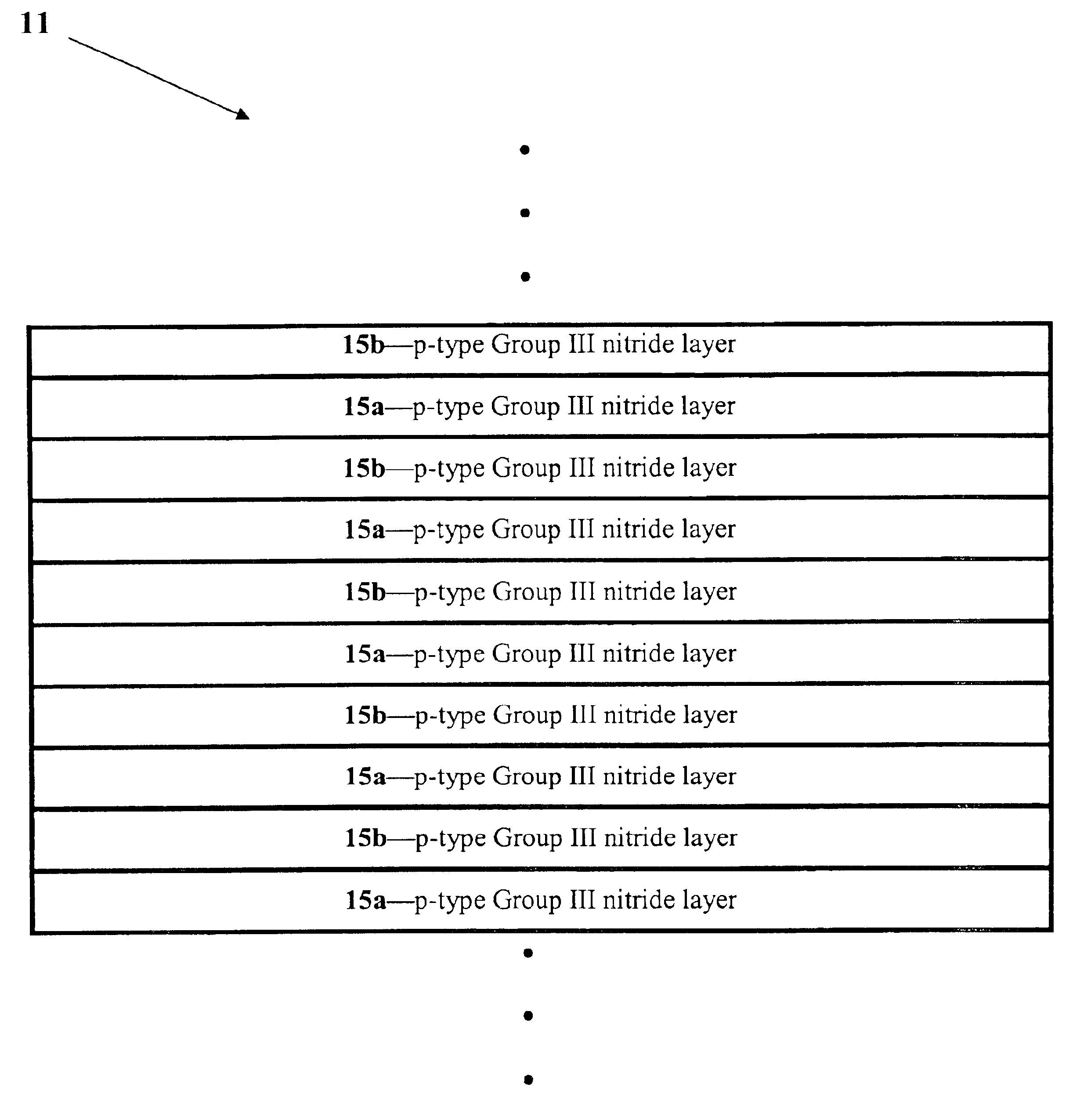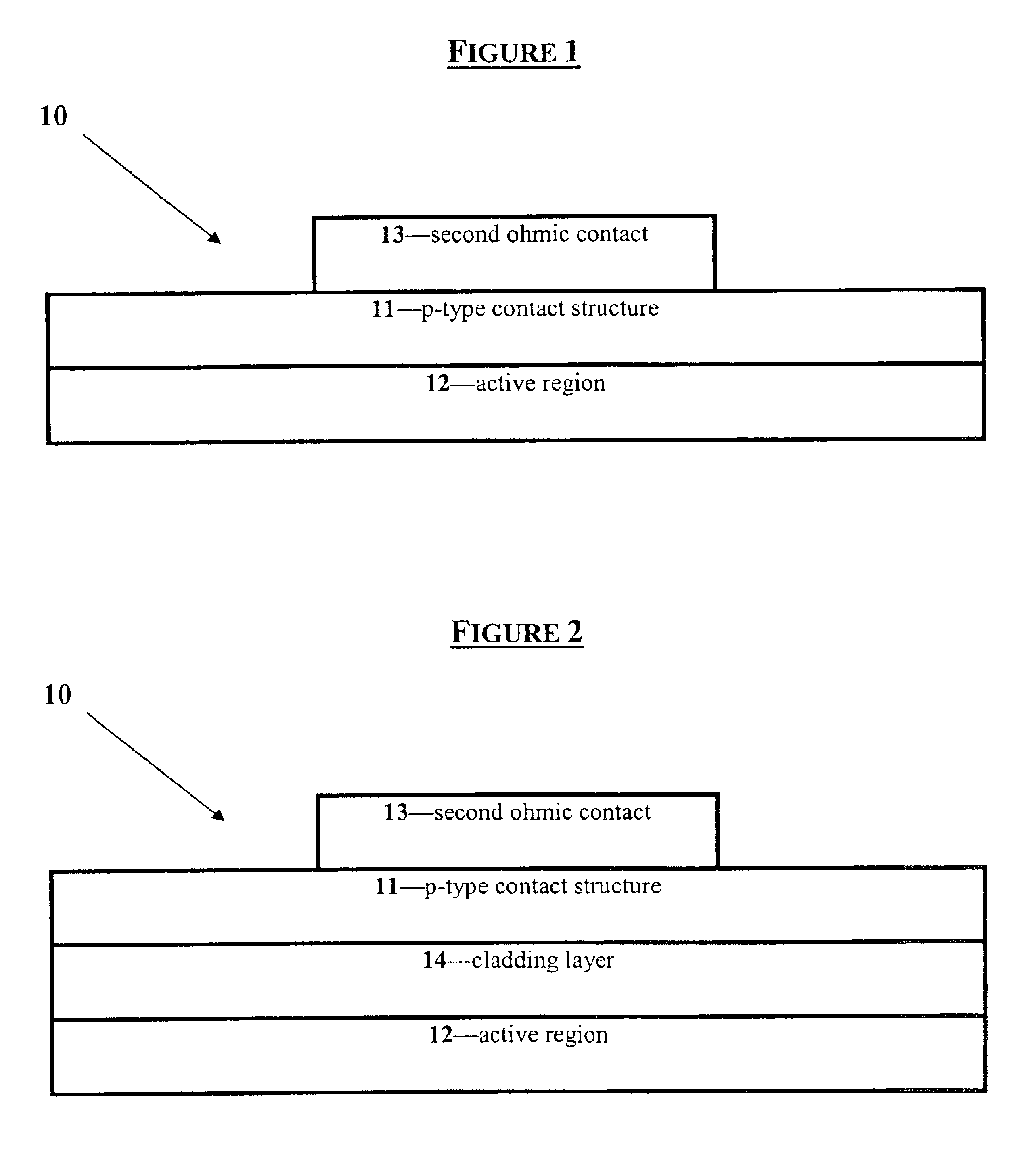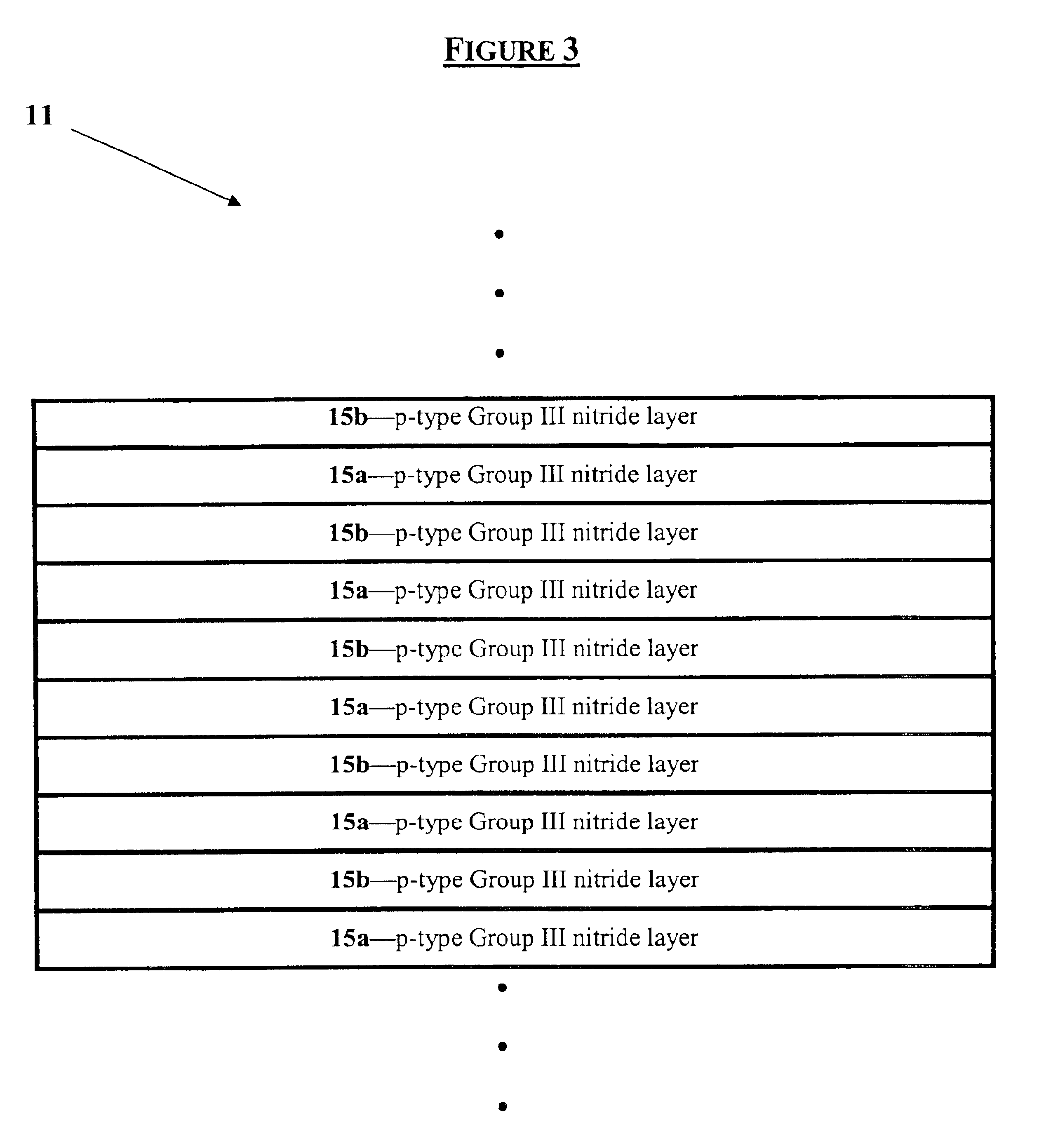Group III nitride contact structures for light emitting devices
a technology of nitride and contact structure, which is applied in the direction of lasers, semiconductor lasers, semiconductor/solid-state device details, etc., can solve the problems of less likely transition, less functional constraints, and less likely leds
- Summary
- Abstract
- Description
- Claims
- Application Information
AI Technical Summary
Benefits of technology
Problems solved by technology
Method used
Image
Examples
Embodiment Construction
[0035]The present invention is a p-type Group III nitride contact structure that is useful in light emitting devices capable of emitting in the red to ultraviolet portion of the electromagnetic spectrum.
[0036]An understanding of the invention may be achieved with reference to FIGS. 1 and 2, each of which is a cross-sectional schematic view of an LED embodiment according to the present invention. The LED structure, which is generally designated at 10, includes a p-type contact structure 11 that is positioned between an active region 12 and an ohmic contact 13. See FIG. 1.
[0037]In another embodiment, the LED structure 10 further includes a cladding layer 14, which is positioned between the active region 12 and the p-type contact structure 11. See FIG. 2. Accordingly, in this embodiment, the p-type contact structure 11 is positioned between cladding layer 14 (as well as active region 12) and an ohmic contact 13.
[0038]It will be appreciated by those of ordinary skill in the art that, as...
PUM
| Property | Measurement | Unit |
|---|---|---|
| wavelengths | aaaaa | aaaaa |
| wavelengths | aaaaa | aaaaa |
| optically transparent | aaaaa | aaaaa |
Abstract
Description
Claims
Application Information
 Login to View More
Login to View More - R&D
- Intellectual Property
- Life Sciences
- Materials
- Tech Scout
- Unparalleled Data Quality
- Higher Quality Content
- 60% Fewer Hallucinations
Browse by: Latest US Patents, China's latest patents, Technical Efficacy Thesaurus, Application Domain, Technology Topic, Popular Technical Reports.
© 2025 PatSnap. All rights reserved.Legal|Privacy policy|Modern Slavery Act Transparency Statement|Sitemap|About US| Contact US: help@patsnap.com



